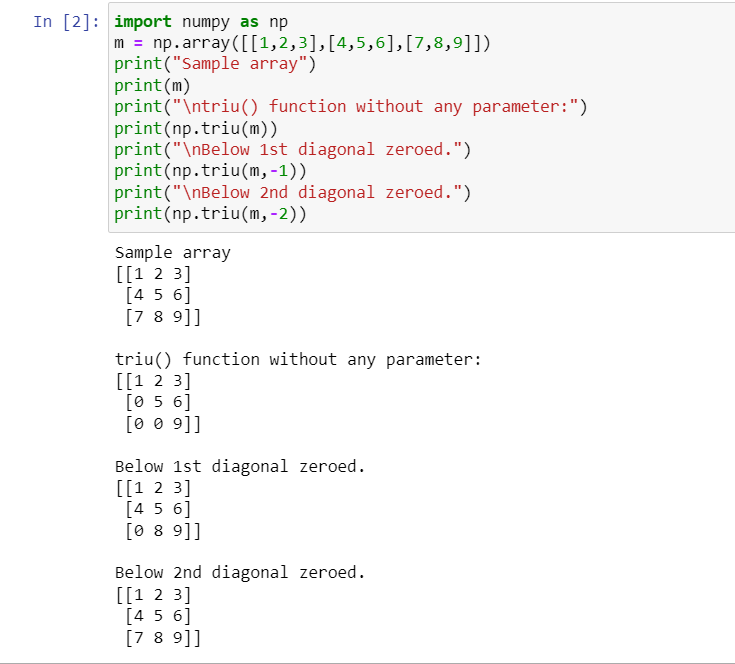numpy.triu() returns a copy of the array matrix with an element of the upper part of the triangle with respect to k. It returns a copy of array with upper part of triangle and below the kth diagonal zeroed.
Syntax:
numpy.triu(m,k=0)
Parameters:
m- number of rows in the array.
k-It is optional. Diagonal above which to zero elements. k=0 is the main diagonal and its default.
k>0 is above it and k<0 is below it.
Return value:
It returns a copy of the matrix with elements below the kth diagonal zeroed.
Example:
import numpy as np
m = np.array([[1,2,3],[4,5,6],[7,8,9]])
print(“Sample array”)
print(m)
print(“\ntriu() function without any parameter:”)
print(np.triu(m))
print(“\nBelow 1st diagonal zeroed.”)
print(np.triu(m,-1))
print(“\nBelow 2nd diagonal zeroed.”)
print(np.triu(m,-2))
